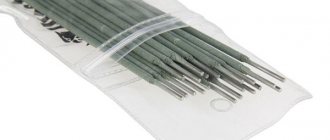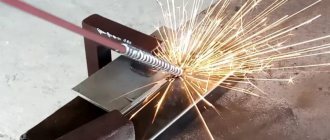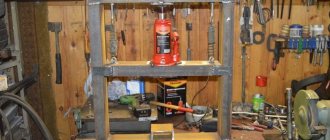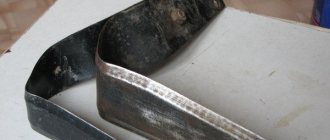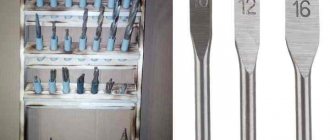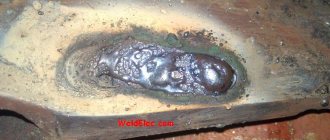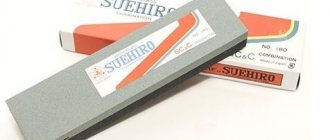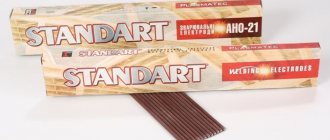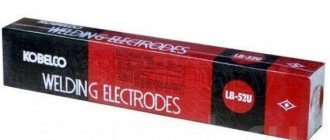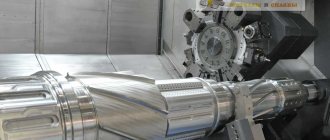If the electrodes are of poor quality, then the welding will be of poor quality. But do electrodes have an expiration date? The packages indicate the release date, but no shelf life or expiration date. And this seems logical, because we are not talking about cottage cheese or sour cream. On the other hand, complex chemical compounds, such as electrode coatings, logically cannot last forever. Let's figure it out.
What is regulated
The welding machine rod is regulated by a number of standards:
- GOST 9467-75 “Coated metal electrodes for manual arc welding of structural and heat-resistant steels. Types" reveals different types of consumables and their characteristics.
- GOST 9466-75 (ST SEV 6568-89) “Coated metal electrodes for manual arc welding of steels and surfacing. Classification and General Technical Conditions” divides rods based on suitable steel, types of coating; lists dimensions, symbols.
Marking
Contains the following complete information about the "cartridge". For example, E42A-UONI-13/45-3,0-UD E432(5)-B 1 0 means:
Dear readers! To solve your problem right now, get a free consultation
— contact the lawyer on duty in the online chat on the right or call: +7 (499) 938 6124 — Moscow and region.
+7 (812) 425 6761 — St. Petersburg and region. 8 (800) 350 8362 - Other regions of the Russian Federation You will not need to waste your time and nerves
- an experienced lawyer will solve all your problems!
- E42A – type, strength 42 MPa;
- UONI-13/45 – brand;
- 3.0 – diameter;
- U – purpose for carbon steels;
- D – coating thickness;
- E432(5) – metal characteristics;
- B – type of coating – basic;
- 1 – spatial position – any;
- 0 – current characteristics – constant, reverse polarity.
In addition, the GOST to which the product corresponds is indicated.
| Type | steel grade | Application | Best before date |
| SSSI-13 | High alloy corrosive | Structures made from chromium species | Unlimited subject to certain conditions |
| MR-3S | Carbon and low alloy | High welding and technological properties | |
| MR-3T | Welding of raw materials with carbon content up to 0.25% | ||
| OZS-6 | Material with tensile strength up to 490 MPa | ||
| OZS-12 | |||
| SSSI 13/55 | Designs with ductility requirements |
Storage of welding materials
Warehouses for storing electrodes, solid and flux-cored welding wire and flux must be dry, protected from precipitation, have heating, lighting and ventilation. The air temperature in the room for storing welding materials should not be lower than plus 15 ° C, and the humidity should not be higher than 40%.
Warehouses of workshops and sections must be equipped with ovens for drying and calcining electrodes and flux, and, if necessary, with machines for cleaning and winding welding wire.
Welding materials should be stored on racks by batch, type, grade, diameter and date of manufacture. In order to avoid damage to the coating of the electrodes, they should not be stored in mutually perpendicular directions. The stacking height of packages should not exceed five rows. Coils and coils of wire must be stored in the original packaging.
Fluxes should be stored in paper bags, stacked, or in special closed containers (containers, bunkers, chests). If the packaging is damaged, fluxes should be stored only in containers, bins and chests.
Each cell on the racks must be equipped with a plate with characteristics of welding materials and an indication of the expiration date. Welding consumables with expired shelf life may only be used after re-checking their technological properties.
Cylinders filled with gases used in welding and cutting should be stored in special dry, ventilated areas. Warehouses for storing cylinders filled with gases should be one-story with light-type coverings and not have attics. Walls, partitions and coverings of warehouses for storing gases must be made of fireproof materials of at least II degree of fire resistance; Windows and doors must open outwards. The height of storage areas for cylinders must be at least 3.25 m from the floor to the lower protruding parts of the covering.
The floors of warehouses must be level with a non-slip surface, and warehouses for flammable gas cylinders must have a surface made of materials that prevent sparking when any objects hit them. Filled cylinders with shoes are stored in a vertical position, without shoes - in a horizontal position on wooden racks.
To protect against falling, cylinders are installed in specially equipped nests, cages and protected with a barrier. Cylinders must be stored with caps screwed on; There should be plugs on the valve fittings of cylinders with flammable gases.
To store electrodes at workplaces, use portable cases with a capacity of up to 5 kg.
The issuance of welding materials from the central warehouse is usually carried out according to requests, which are drawn up by line engineers responsible for the production of welding works, after calculating their needs according to approved standards, and checking their compliance (by type and brand) with the requirements of welding projects.
Welding materials are issued from the central warehouse in quantities not exceeding two-week requirements. Welding materials must be provided to the workplace in quantities not exceeding shift requirements.
The amount of materials issued to the workplace must be taken into account in the “Individual card for recording the consumption of welding materials.”
Timing and types
Electrodes are used for steels with different levels of alloying elements, structural, heat-resistant, ductile metals, surfacing.
Brands intended for a specific type of work are classified by coated rods. The most popular SSSIs are:
- UONI 13-45 rods contain nickel and molybdenum;
- UONI 13-65 is used for welding in difficult conditions, since work from any position is possible.
Also in demand:
- MP-3S for low-alloy raw materials;
- MP-3T for carbon steels;
- LB-52u – pipe welding;
- OK 53.70 – low carbon;
- OK 46.00;
- OZS-6;
- OZS-12.
A mandatory element is a protective coating consisting of:
- components for arc combustion;
- deoxidizers;
- kaolin, mica;
- aluminum, silicon;
- binders.
Based on the composition, the following types are distinguished:
- cellulose - used for direct and alternating current. Disadvantage: splashing;
- sour is not used for vertical position;
- rutile is not suitable for steel with high sulfur and carbon content;
- mainly effective for joining thick metal.
IMPORTANT! A combination of several types is possible.
The letters indicate the thickness of the coating:
- M – thin;
- C – average;
- D – thick;
- G – especially thick.
Subject to proper conditions, they have an unlimited shelf life and storage.
How to properly store electrodes
ADVICE! You can extend shelf life using special thermal cases. They maintain the desired temperature and protect from moisture.
Welding consumables must be stored under certain conditions. So, the room:
- must be dry, humidity not higher than 50%;
- have functioning ventilation or air conditioning;
- with heating, waterproofing;
- the temperature must be maintained at a level not lower than 14 °C.
Stored in cardboard boxes wrapped in paper or plastic film. Packages are placed on shelves or racks to avoid contact with the floor and walls.
What to check after long-term storage
The material has retained its integrity, even color, the coating should evenly cover the rod. If there is a risk of moisture, it is better to heat it before use.
IMPORTANT! Moisture is especially harmful. Water accumulates in the winding, which begins to crumble. When using such material, the seam will turn out to be of poor quality.
Looking for energy efficient solutions?
Pay attention to FORUMHOUSE geothermal heat pumps
Ground source heat pump EU (start/stop)
Geothermal heat pump IQ (pseudo-inverter)
IQ ground source heat pump (inverter)
With the onset of cold weather, many home-made workers and country residents end the season and curtail all work until spring. Garden tools, chainsaws, gas trimmers, welding inverters, drills, screwdrivers and grinders are sent to garages, outbuildings and sheds for conservation. At the same time, people are concerned with questions: how to store tools in winter, whether they will deteriorate due to low temperatures, and how to use them if brought from the cold to a warm room. Let's find out the opinion of FORUMHOUSE participants!
- How to preserve a gasoline spit for winter storage
- Is it possible to store a welding inverter in an unheated room?
- Where to store electric tools in winter and how to use them correctly in the cold
How long can you store after calcination?
If the product is damp, the period of acceptable use can be restored for a while by calcination:
- With rutile coating: bake for about 2 hours, store at a temperature 20° above ambient for up to 10 hours ;
- With low and very low content of diffuse hydrogen in the deposited metal: calcination for up to 6 hours, storage in an oven at 180 °C for an unlimited time, in a thermal case for up to 10 hours, in a plastic container for up to 2 weeks;
- Stainless steel: calcination for about 6 hours, storage in an oven at 125 °C for an unlimited time, in a thermal case for up to 10 hours.
Calcination is a heat treatment whose purpose is to reduce the amount of liquid. The procedure is carried out immediately before use; storing hardened rods is not recommended. Allowed up to 3 times; exceeding this amount will lead to shedding of the coating. The optimal mode is indicated on the electrode packaging.
Storing and working with electric tools at subzero temperatures
In winter, some self-builders send power tools to storage in the household, while others continue to work with them. Both of them are concerned with the following questions:
- Is prolonged exposure to cold harmful to power tools?
- Is it possible to work with power tools in the cold?
- How to operate a power tool if you bring it from a cold place to a warm room.
I'm building a house. I work in temperatures down to -10 degrees Celsius. I use power tools - a miter saw, a thickness planer, a corded drill and a screwdriver. I store them in the cold. I don't use cordless tools. An old screwdriver with a nickel-cadmium battery does not hold a charge well, and the lithium-ion one is said to be afraid of frost. Tell me, who has worked with power tools in the cold, is this harmful to them?
I want to know if it is possible to store an electric tool that runs on mains power in the cold? In winter, the temperature in the garage drops to -10 - -35 degrees Celsius. Can I leave my plane, circular saw and grinder there until summer?
First, let's answer the question that Osya asked.
The laws of physics apply to the instrument. Take, for example, a screwdriver; when heated, it expands. The battery is also expanding. When expanding, it squeezes out excess air from its insides, and the air is hot. When you leave the tool in cold and humid air, as it cools down, the rotor, stator and battery draw in something that is colder than it. Including moisture. Therefore, after bringing a tool from the street into an apartment or simply into a warm room, it is advised not to turn it on for at least 2 hours, but when taking it from a warm room to a cold one, there are no such restrictions.
Don’t forget about the appearance of condensation when bringing a tool from cold to warm.
Article on the topic: Where to complain about car service in a garage
If you stored the tool at sub-zero air temperatures and will be working in a warm environment, then, first of all, you should be wary of condensation. And condensation is a potential risk of short circuit.
You can store an electric tool for a long time even in the cold . Nothing will happen to him until spring. You can also work in winter.
I worked on a woodworking machine right outside in the winter. Ordinary hand-held electric tools too. I sawed, planed, and chamfered for more than one day in a row. Nothing happened to the instrument.
How to understand what has gone bad
You can tell if a product is damaged by visual inspection. There are three states:
- completely ready for use;
- it can be used after processing (calcination), when the degree of moisture impregnation is low, the coating has not crumbled, and fits tightly to the rod;
- if the coating does not adhere to the rod, it crumbles and breaks off.
It is prohibited to use a product with the characteristics of the third option. The seam from such material will be of poor quality and may come apart at any time.
Preparing a gasoline scythe for winter storage and preservation
A tool such as a lawn mower can be called a well-deserved “hard worker.” If the grass on the site is rushing, or a neglected area needs to be cleared of weeds, then do not let go of the gasoline scythe. In winter, the lawn mower is sent to a well-deserved rest - in the barn or in the shed, until the next season. We offer you a set of simple recommendations, following which, you can easily start a lawn mower next year, and the tool itself will safely overwinter in an unheated room.
Article on the topic: What's in your garage
- Remove the line from the trimmer head or unscrew the cutting blade. Clean the instrument from grass, sand and dirt.
- Unscrew the cap and drain the remaining gasoline from the tank into a container of suitable volume.
- Start the trimmer and let it run until it exhausts the remaining fuel mixture that is in the fuel line and carburetor.
- After the lawn mower stalls, remove the spark plug and unscrew the spark plug.
- Take a disposable syringe and inject 5 ml of the oil you use to prepare the gasoline mixture for a two-stroke engine into the combustion chamber.
- Rotate the piston by gently pulling the starter cord handle several times. This will distribute the oil evenly throughout the cylinder.
- Wrap the spark plug and put on the spark plug.
- Check the air and fuel filters. If they are dirty, wash and dry the air filter thoroughly and replace the fuel filter.
- Store the lawn mower in a hanging position, for example, on the wall of a shed or shed.
Do you preserve your lawn mower for the winter or leave everything as is? Tell us!
Is it possible to use expired
The shelf life of the electrodes is conditional and directly depends on how the rods were kept. If all requirements have been met, protection from moisture, the product can be stored indefinitely.
When a visual inspection indicates a violation of the integrity of the coating, it cannot be used for its intended purpose. The seam will be loose. This is also fraught with poor ignition, sticking of the electrode, and shedding of the layer.
Dear readers! To solve your problem right now, get a free consultation
— contact the lawyer on duty in the online chat on the right or call: +7 (499) 938 6124 — Moscow and region.
+7 (812) 425 6761 — St. Petersburg and region. 8 (800) 350 8362 - Other regions of the Russian Federation You will not need to waste your time and nerves - an experienced lawyer will solve all your problems! Or describe the situation in the form below:
conclusions
By following the rules that we described above, you will extend the life of electric and gas tools and ensure their trouble-free operation. Let's summarize:
- Gasoline and electric tools can be successfully stored in the winter in a garage or in a shed.
- Power tools can be used successfully even in cold weather.
- Attention is required if a tool powered by an electrical network is brought from cold to warm . To prevent it from shorting due to condensation, wait 2 hours before turning it on.
And one moment.
I believe that the instrument “does not like” temperature changes. I carry a chainsaw in the trunk of my car all year round. I only bring the batteries that I remove from the tool into the heat.
- Preparing the dacha for winter: what features need to be taken into account before starting winter operation, why the dacha needs to be insulated, how to heat it and install a problem-free water supply system.
- 4 welding goodies for dummies: a pencil case for storing electrodes, nuances of extending and connecting welding cables.
- Tools for the self-builder, which is necessary for the builder who has decided to independently build a country house without outside help.
